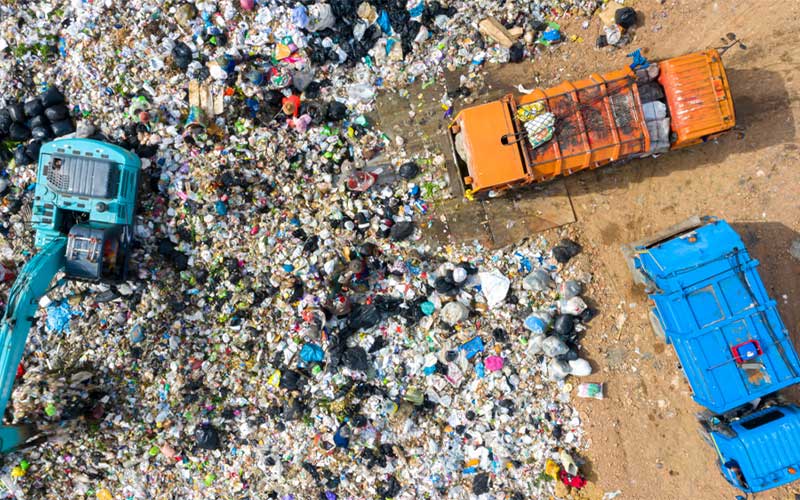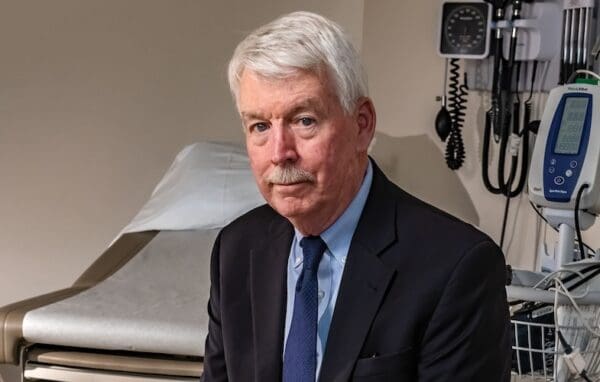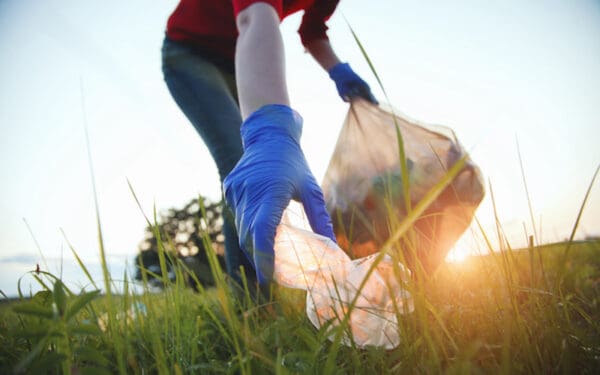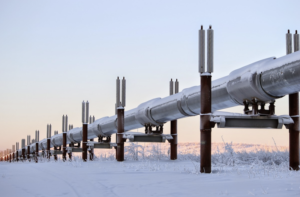
An aerial view of a pile of trash in a landfill. In the U.S., landfills accept 146 million tons of waste each year. Photo credit: Avigator Fortuna.
For many people, landfills are an abstract concept. Few have ever visited one. Instead, all we know is the loud and malodorous but relatively painless process of trash trucks rumbling through neighborhoods each week to whisk away our discards. Or, perhaps, taking our trash to a local transfer station. As far as we’re concerned, that’s the end of the matter.
Except, that’s rubbish.
Instead, our garbage begins a second, very long life in landfills, which in the U.S. accept 146 million tons of waste each year. In New England, 75 landfills accept what amounts to 4.5 pounds of trash per person per day. Plastic, food, textiles, wood, yard trimmings, glass, metals, and paper end up in these garbage dumps. In other words, many materials we should be recycling. And what happens from there is a sadder story. While a percentage of items are sorted and sent to recycling at a waste transfer station, much of what we throw away (referred to as municipal solid waste by those who speak trash) gets crushed, compacted, and covered with dirt or some other landfill cover, taking decades or more to decompose.
The Problem with Landfilling
This is where more problems come in. As it decomposes, our refuse produces landfill gas that pollutes our air, damages our health, and contributes to climate change. According to the EPA, U.S. landfills release methane equivalent to the carbon emissions from 23.1 million gas-powered cars driven for one year each year. That’s 10 times the number of cars registered last year in Massachusetts alone.
And that’s not all. Trash in landfills contaminates soil and water. That’s because, as even the EPA will tell you, all landfill sites will leak sooner or later. Despite newer landfill designs boasting two liners (usually one made of plastic, the other of compacted clay), only a few inches stand between landfill “cells” (landfills are commonly designed with separate basins for trash) and the earth beneath it. Once a cell is filled, it’s covered with gravel, capped with flexible plastic, and covered with sod. Each time it rains, those trash-filled cells get wet as the plastic covers disintegrate.
All that wet garbage, brimming with chemicals, solvents, volatile organic compounds, dyes, plastics, and heavy metals, oozes garbage juices, better known as landfill leachate, into the soil. This noxious stew is highly toxic and a major threat to the purity of water and the health and safety of both animals and people living nearby (often low-income communities or communities of color).
Older Trash Dumps are Even Worse
And that bleak scenario is only for newer landfills. Thousands of older landfills across the country lack those plastic liners, allowing toxic juices to freely flow into groundwater. Many older dumps were only loosely covered with soil, increasing the risk that rainwater carries toxic chemicals to groundwater below.
Although landfill operators are required to remove and treat toxic landfill juices in a process that may include a system of pipes that send leachate to a collection tank before treatment at a facility, some inevitably drain into groundwater, polluting nearby marshes, streams, and lakes. Waste companies are supposed to monitor for contamination, but they often don’t or do not do enough. Even when tests reveal that a landfill is contaminating groundwater, officials often look the other way.
And that leachate that gets sent to treatment facilities? It still endangers our health and environment because those facilities lack the technology to treat toxic forever chemicals called PFAS. Instead, that “treated” wastewater, still laden with chemical contaminants, gets dumped back into our environment.
In New England, many landfills leaking contaminants into groundwater are seeking to expand. They include the Bourne and Saugus Ash Landfills in Massachusetts and the Putnam Ash Landfill in Connecticut. A landfill in Bethlehem, New Hampshire, was granted permission to expand this year despite CLF’s attempt to block it.
Alternatives to Garbage Dumps
Let’s face it – no landfill is safe. No matter how many barriers, liners, and pipes operators use (all of which may ironically contribute to contamination since they can be made of plastics that will also dissolve over time), landfills will leak toxic juices eventually. That’s what happens when you throw metals, plastics, and textiles into a giant pit that you cover with dirt and more plastic. Add a little water (you don’t need to stir), and you’ve got a big nasty mess on your hands.
For this reason, CLF is calling on state and local governments to find smarter ways of dealing with trash. First step: Create less of it. We must nip the problem at the source – holding producers of single-use plastic packaging responsible for all the waste they create. Robust recycling and composting programs can also keep a significant amount of waste out of landfills.
This is why CLF worked to pass the nation’s first producer responsibility law in Maine and why we’ve now set our sights on passing similar laws across New England. And it’s why we helped pass a food waste law in New Hampshire that keeps food scraps – representing about 24% of the waste in landfills – out of them. It’s also why we’ve worked so hard to update and expand bottle bills around New England.
Our Trash Problem Has Gotten Worse
Our trash problem wasn’t always as bad as it’s become. We used to throw away a lot less. But today, manufacturers produce literally tons of “disposable” packaging in the form of wrapping, boxes, bottles, and cans. Sadly, there’s a lot more to throw away. But we can’t continue down this trash-strewn path. Let’s reduce our reliance on landfills by producing less trash. Let’s reuse and recycle what we can and hold producers responsible for the packaging they create. Finally, let’s phase out the use of dangerous “forever chemicals” that end up in dumps. We need smarter policies and better regulations.
After all, our responsibility to the next generation doesn’t end when we leave our garbage cans at the curb.
This is one in an occasional series revealing the truth of some environmental issues.



